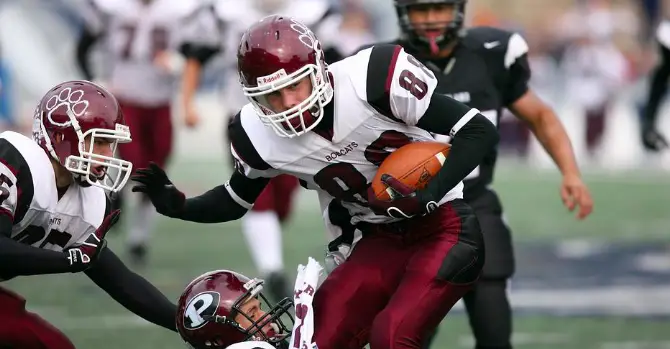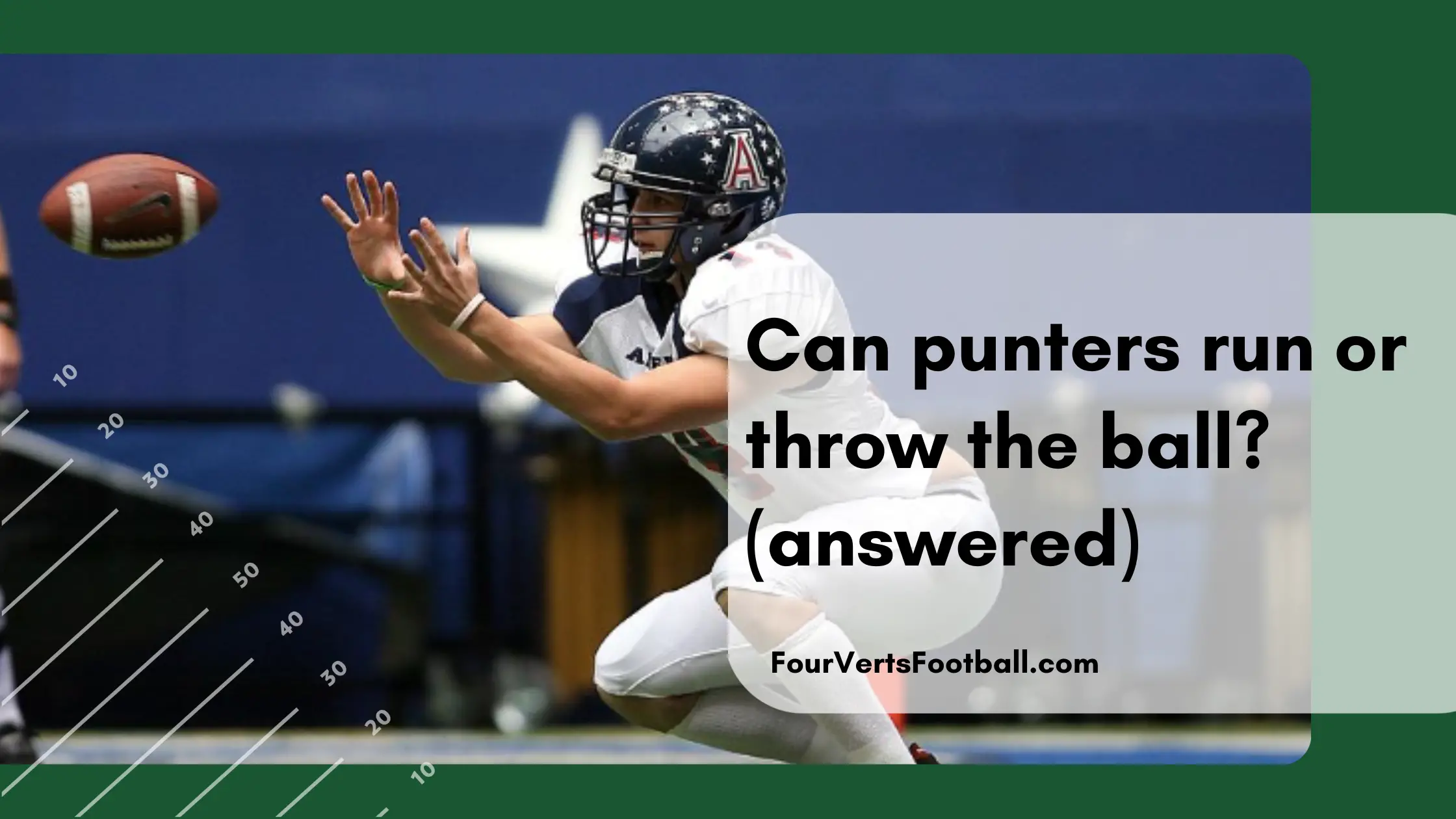A punter in football is a player who drop-kicks the ball deep down the field. Punters tend to come onto the field on fourth down when the offense decides to give up possession of the ball.
The action of punting the football moves the ball way downfield and makes the opponent’s job of getting to your endzone much harder.
Though many fans wonder if punters are able to run with the ball or throw it forward instead of punting it.
Punters are allowed to throw the ball or run the ball on any punting play. When the ball is snapped to the punter he has the same capabilities as a quarterback.
They are able to move the ball down the field the same way any other offensive player is.
Why punters don’t run or pass the ball?
Now that you know punters are allowed to rush with the ball or throw it you may be wondering why it rarely happens.
The trouble is on punting plays the rest of the offense is not trying to help the punter rush or pass the ball.
Instead, they are trying to protect the punter long enough so that he is able to punt the ball downfield.
Unless the offense has called a trick play the punter is not going to have any receivers to throw to. He will also not have any players run blocking downfield.
Another reason that punters will not often pass or run the ball is that punts occur on fourth down.
On each set of downs, a team will have up to four attempts to gain a new set of downs.
On the fourth attempt if the team does not reach the first down marker they will have to give up the ball. This is referred to as a turnover on downs.
On punts, if the punter tries to run or pass the ball and fails to get the first down then the ball will be turned over at that location.
This makes this sort of play incredibly risky as the opponent may gain possession of the ball at your position.
That being said from time to time teams will risk it and draw up a play in which the punter carries the ball or throws it downfield.
When do punters rush or throw the ball?

So we know punters are allowed to rush the ball and pass the ball in football. We also know that they rarely do it due to the risk that is involved.
But when exactly do teams decide to risk it and let their punter gain some yards?
One of the main situations in which a team will run a fake punt is when they are near midfield. This is a portion of the field in which teams cannot attempt a field goal and will rarely punt the ball.
This area of the field is a great place to take a risk as turning the ball over will only have the opponents starting at mid-field.
In these situations, the special team’s coach may call a fake punt which could involve the punter throwing the ball to a receiver or rushing the ball.
Generally speaking, the punter is more likely to throw the ball than run with it. Rushing the ball as a punter is quite rare as these players are not usually the fastest on the field.
Instead fake punts that involve runs are more likely to involve the ball being snapped to the personal protector.
The one situation in which a punter will often run with the ball is on a bobbled snap. When the long snapper sends the ball back to the punter it is not always caught cleanly.
Sometimes these snaps are dropped causing the punter to have to find the ball and recover it.
The punter will rarely have time to collect the ball and punt it so instead they will often start running with the ball in their hands.
Unfortunately for the offense these situations usually lead to the punter being tackled before he reaches the first down marker. But every once and a while you will see a punter go on a run and gain the first down for their team.
That’s all on punters rushing and throwing the ball learn about if you can catch your own punt or learn what a punt return means in football.

